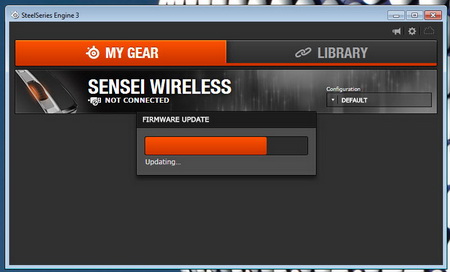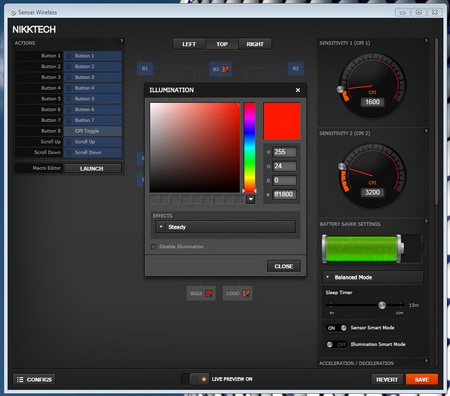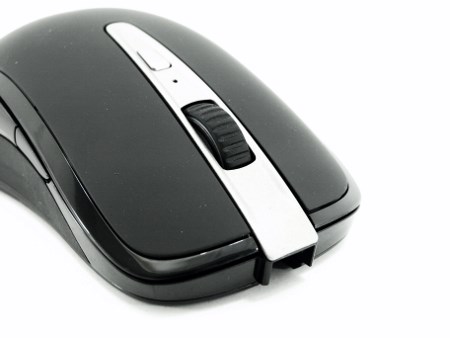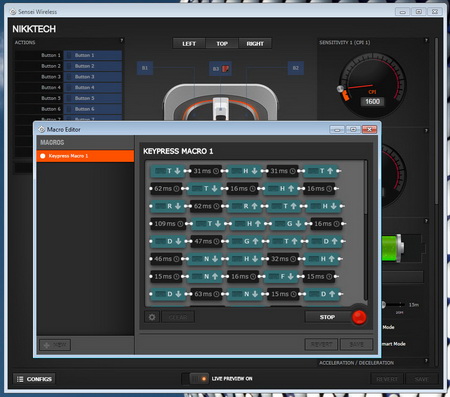INTRODUCTION

After waiting for quite a few years to play/enjoy the next chapters of two very special PC titles it was only natural that the moment The Witcher 3 Wild Hunt (it's finally here) and Galactic Civilizations III made their debut we'd cut all ties with the outside world (well not exactly but you get the point) for at least a week (trust me when i say that even a week wasn't enough). So since it so happened that both titles got released during the past week once again we had very little choice other than to focus in wrapping up the reviews of some very interesting and unique gaming peripherals we've been using for quite a while now. Obviously as you can all imagine we chose to test the ones that would also offer us the best possible experience with the above titles and one of those was no other than the Sensei Wireless Gaming Mouse by our very good friends over at SteelSeries.
From day one, SteelSeries has been focused on making professional gaming gear that provide meaningful benefits to gamers of all skill-level, with the most demanding being those gamers whose lively hood depends on the performance of our products. We believe, as most gamers do, in winning, not trying! What originally began as a small two-person operation in Copenhagen back in 2001 has become a global leader in professional gaming products. SteelSeries recognized the need for superior, high-quality professional gaming gear that would give players a competitive edge. Fast-forward to today, and we've come a long way since our first glass mousepad. We have global offices in North America, Europe, and Asia, providing an integrated portfolio of products designed specifically for gaming. Fueling our growth is you, the gamer!
How many of you remember the Sensei MLG and Sensei [RAW] by SteelSeries both of which we reviewed in the past? Well the Sensei Wireless falls somewhere between those two in terms of performance since under its hood we find the ADNS 9800 laser sensor by Pixart which offers a resolution of up to 8200 CPI (16400 DCPI), 150 IPS (inches per second) tracking speed and 30Gs of acceleration. The Sensei Wireless also features SteelSeries switches (30 million clicks), internal rechargeable battery pack that gives it up to 20 hours of life, 16.8 million colors illumination, ergonomic ambidextrous design, 8 programmable buttons, 1 ms (millisecond) response rate, 1000Hz polling rate and 2.4GHz wireless connectivity for a virtually lag-free experience. On paper however many things look great and especially when it comes to wireless gaming mice we are very skeptical about the "gaming" part since in the past wireless connectivity was not what we'd call ideal for that.
SPECIFICATIONS AND FEATURES


PACKAGING AND CONTENTS
The Sensei Wireless gets shipped inside a small box with just a product picture at the front, the OS compatibility and the company logo.
On the left side we see yet another product picture and the main product features.
The main product features are listed in depth at the rear in 3 languages.
Packaging is extremely good as you can see from the above picture.
Along with the Sensei Wireless Gaming Mouse and its recharging base you will also get a USB cable, SteelSeries sticker, warranty paper and the user manual.
THE SENSEI WIRELESS
The body of the Sensei Wireless features a nice rubber coating, weighs just 120g and measures 129mm in length, 69mm in width and 41mm in height.
Just like the original Sensei models the Sensei Wireless has 2 programmable buttons on the left side.
The company logo is placed at the rear end of the Sensei Wireless.
Once again the CPI toggle button is placed at the top right next to its selection LED.
Two more programmable buttons are placed on the right side along with a segment covered with rubber (just like the left) for better grip.
The Scroll wheel is also rubber coated and feels very good.
A micro-USB port is placed at the nose of the mouse and as you might have guessed you can connect the USB cable directly to the mouse if you run out of juice.
Four large PTFE (Polytetrafluoroethylene) feet are placed at the bottom of the Sensei Wireless (the switch on the upper right corner is used to release the USB cable if you have it plugged in).
Taking a closer look at the center we see the ADNS 9800 laser sensor, on/off button, connect (pair with the base) button and three recharging tips.
The charging base looks great but it's not small so with a length of 165.5mm, width of 99.83mm and height of 21.74mm it will take quite a bit of space on your desk (not that you need it on the desk however).
The micro-USB port is placed at the front of the base.
Most of the bottom is covered with anti-glide rubber material.
The connect/pair button is also placed at the bottom.
The end result however looks great doesn't it?
STEELSERIES ENGINE 3
Since SteelSeries doesn't bundle a software CD with the Sensei Wireless you will need to download the latest Engine 3 software from their page.


Once you download, install and launch the software chances are it will notify you of a firmware update. This procedure takes a few minutes to complete and requires you to plug the mouse directly to your system using the USB cable.
Most of the available settings are placed in this single window so it looks like SteelSeries decided to "simplify" things (nothing wrong with that).
You can load configurations from the tab on the left (after you press the configs button at the lower left).
To really see all of the available settings you will need to scroll quite a bit so we decided to take a snapshot of the full window. So from here you can program the 8 buttons, adjust the two DCPI modes (up to 16400), setup the battery saver option, set the sleep timer, enable/disable smart illumination, adjust acceleration/deceleration, play with the lift-off distance, modify the angle-snapping feature and finally set the polling rate.
You can also create macros via this software which in turn you can assign to the buttons.


As for the illumination feature well you can either choose for it to reflect the battery status (green, yellow, orange and red) or you can choose one of the 16.8m available ones.
From the above pictures you can see both the base illumination and the mouse illumination.
CONCLUSION

By now many of you are aware that I’m not much into wireless gaming mice but i always liked the Sensei series so when i heard that SteelSeries was going to launch an wireless version (design remained pretty much the same but i consider that a plus) that was more than enough to get me intrigued. Of course it took a bit of time for us to receive the Sensei Wireless but i can assure all of you that it was worth the wait since this is the best wireless gaming mouse we've used to date. No matter if you use it wireless or wired accuracy is excellent, speed is out of this world really (you'll need more than just 30 inches to even use it at max CPI) and as for battery life well we didn't manage to hit 16 hours as SteelSeries claims but we did slightly over 13 which is not bad at all especially considering that it's not really possible to do without getting up once in a while (during which you can place the mouse on the charging base). Unfortunately the charging base is not small and it can take a bit of space from your desk so i don't know why SteelSeries didn't choose to make either vertical or diagonal so people would need less space for it. This not a drawback of course but we really think that there are other ways SteelSeries could had gone about it.
While i type these lines and The Witcher 3 Wild Hunt awaits for me in Freya’s Garden the SteelSeries Sensei Wireless Gaming Mouse retails for USD129.45 inside the USA (Amazon.com) and for 135.50Euros inside the EU (Amazon.de) a price tag which may seem set high but it's actually not, now when other similar solutions like the Ouroboros by Razer cost just as much. Of course the Sensei Wireless is by no means perfect but thanks to its ergonomic ambidextrous design, fast and accurate laser sensor, rechargeable battery that gives it up to 20 hours of life, the ability to use it wired and the charging base it's one of the top wireless gaming mice in the market right next to the Ouroboros and that's why it gets our Platinum Award.
 PROS
PROS
- Build Quality
- Design (Grip / Ambidextrous)
- Pixart ADNS 9800 Laser Sensor (8200 CPI / 150 IPS / 30G)
- SteelSeries Engine 3 Control Panel
- Charging Base
- Up To 20 Hours Of Battery Life
- Can Be Used Wired
- Braided Cable
CONS
- Price (For Some)

 O-Sense
O-Sense




































.png)

